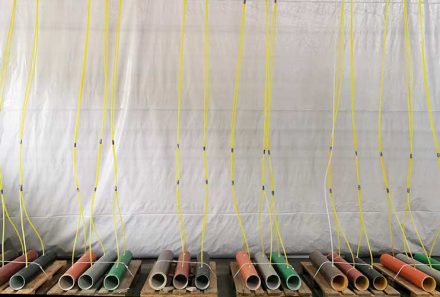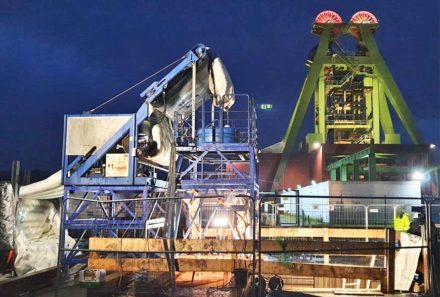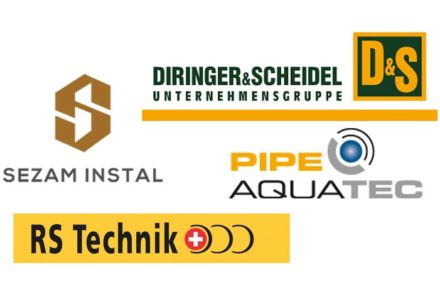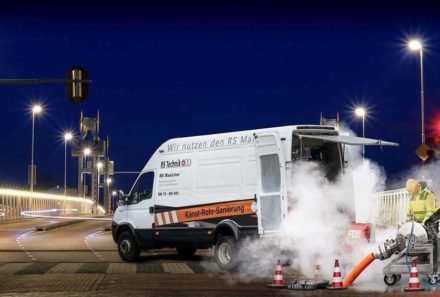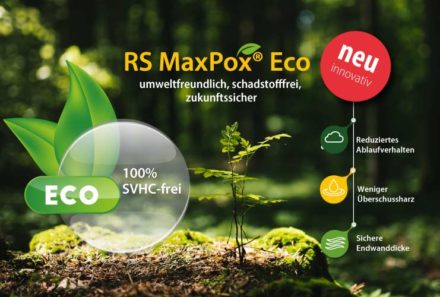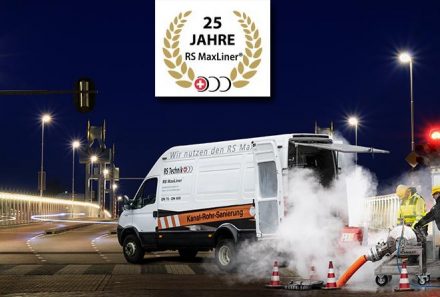MaxLiner and MaxPox Eco in action – Meeting environmental requirements
When the short-term need for rehabilitation of the pipelines in the context of the new construction of the LUEG AMG Brand Center in Essen-Altendorf became known, the company “Rohr Frei Schnelldienst – Axel Zimmerbeutel GmbH” had an environmentally friendly trump card: the new 100% SVHC-free epoxy resin system of RS Technik AG “MaxPox Eco”.
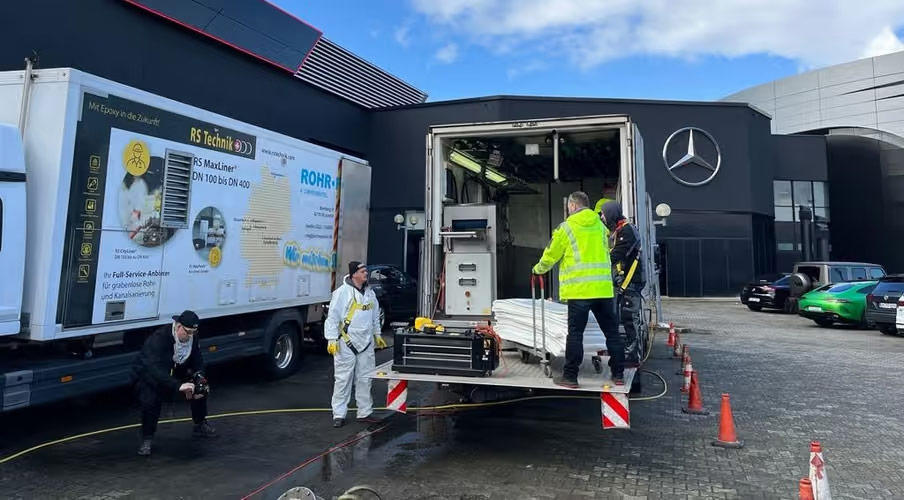
The Zimmerbeutel company has two RS MaxLiner plants for the ranges from DN 100 to DN 400. The annual rehabilitation performance amounts to approx. 15,000 m. The good results have been convincing and Zimmerbeutel has been the bearer of the Siebert+Knipschild seal “End product pipe liner: Tested quality” since 2020. Zimmerbeutel’s expertise is also confirmed by Güteschutz Kanalbau (S27.1 and S27.2), by Dekra (SCC occupational safety) and by TÜV Rheinland (WHG).
With the RS MaxLiner system, Zimmerbeutel has been relying on safe polyaddition curing with the highest quality epoxy resins for over 20 years. Functional reliability under any local boundary conditions, durability and sustainability have convinced Axel Zimmerbeutel and his customers. The epoxy resins used cure completely and safely in all areas and geometries. The flexible carrier hoses overcome multiple bends up to 90° and can rehabilitate up to four dimensional changes while maintaining the required minimum liner wall thickness. No “wallpaper” is created but a load-bearing lining tube (≥ 3.0 mm) without wrinkles even with multiple dimensional jumps.
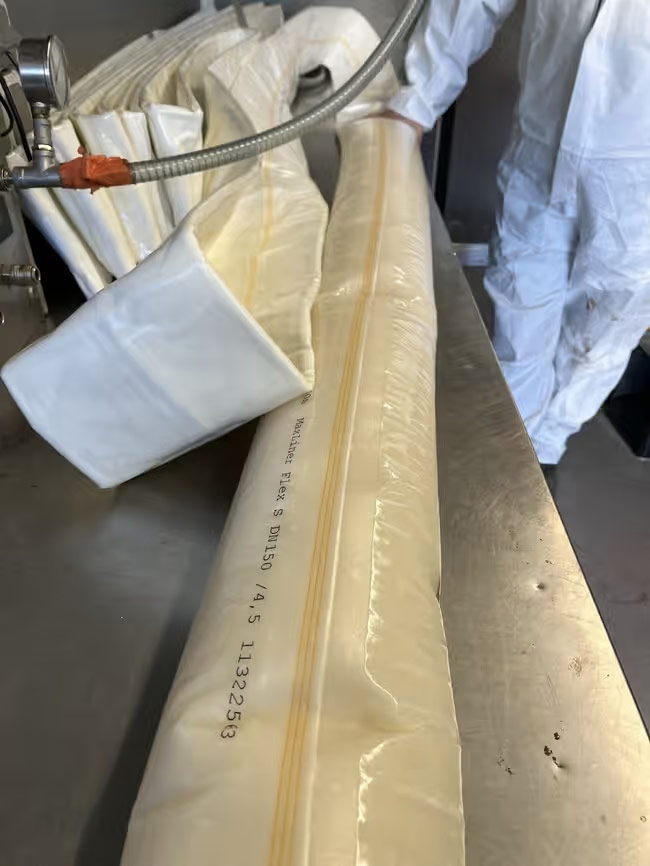
Environmental benchmarks at LUEG
The LUEG AG has been involved in vehicle manufacturing and trading since the pioneering days of Carl Benz and Gottlieb Daimler and can look back on a 155-year history. The company has been a partner of Mercedes-Benz for more than 100 years and is guided by the Daimler Group’s guiding principles for environmental protection and energy management. The “Environmental and Energy Guidelines” are a binding standard in the LUEG company and require the use of environmentally friendly and sustainable products.
At LUEG’s Essen-Altendorf (Germany) site on the former Krupp premises, the new 100% SVHC-free epoxy resin system MaxPox Eco has now been applied, which has been part of the current building authority approval for the RS MaxLiner (abZ/aBG Z-42.3-389) since July 2022. The resin system is characterized by the absence of hazardous substances (SVHC) and, as a modified cold curing agent, ensures complete curing. A total of 27 sewer lines with a total length of about 270 m, ranging from DN 100 to DN 350, were successfully rehabilitated. Some of the pipes were located at a depth of more than 6 m and showed socket offsets, leaking pipe joints and heavy deposits. For environmentally friendly rehabilitation with the epoxy resin system MaxPox Eco, the flexible needle felt hose MaxLiner Flex S was used and curing accelerated by means of hot water or steam.

Curing control
Process control and curing control are always carried out at the “most negative point”, i.e. the liner area furthest away from the energy source: the outer laminate between the liner and the old pipe. In the RS MaxLiner, thermocouples are used to check the temperature reached in the cooling outer area and, on the basis of the values, to specify the holding times for heat curing.
In addition to the usual use of thermocouples, SysCribe’s electronic impedance spectroscopy (EIS) was used during the rehabilitation. This measurement methodology directly detects the curing achieved and provides information on the glass transition temperatures and thus on the strength of the liner laminate. The figure below shows both recorded curves (temperature and permittivity) as well as the comparison with the required glass transition temperatures from the building authority approval. The control measurements have demonstrated reliable through-hardening and achievement of the target values while complying with the manual specifications. They also show a clear savings potential in terms of curing time if the process were controlled on the basis of permittivity. The on-site curing demonstrations underline the corporate standards set by the car company and the demand for environmentally friendly products. After all, safe curing is the basis for environmental protection, durability and sustainability in on-site curing pipe lining.
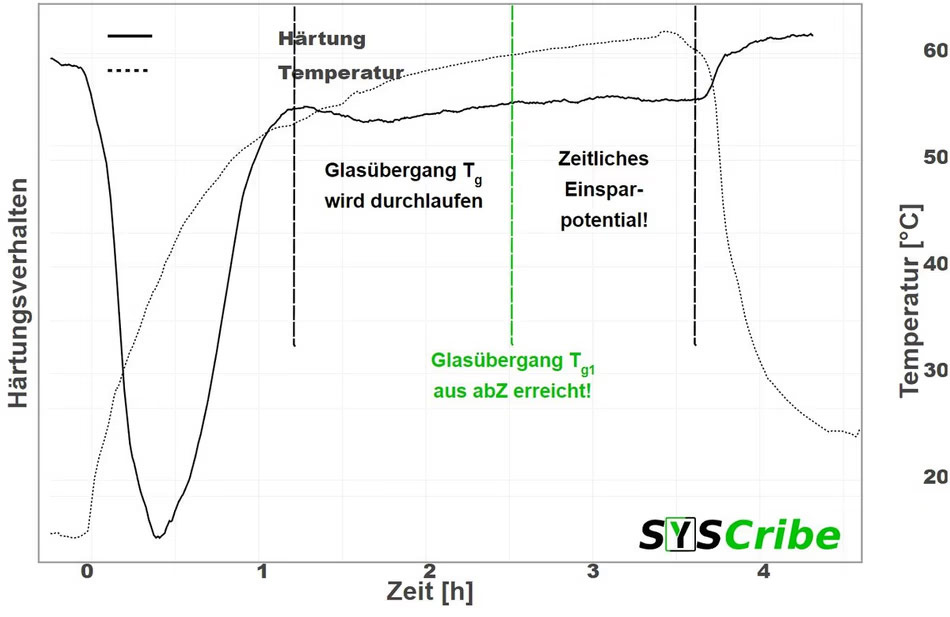
The work on the site went quickly and without complications. This was due on the one hand to the great support from the employees of car company LUEG AG, the expert and above all motivated application technicians from Zimmerbeutel, and on the other hand to the reliable and versatile RS MaxLiner system, which is equipped for increased environmental protection requirements.
Car company LUEG AG was absolutely satisfied with the execution of the services and restrictions in the daily workflow could be avoided.
This article also appeared in BI Medien 5/2023.https://bi-medien.de

